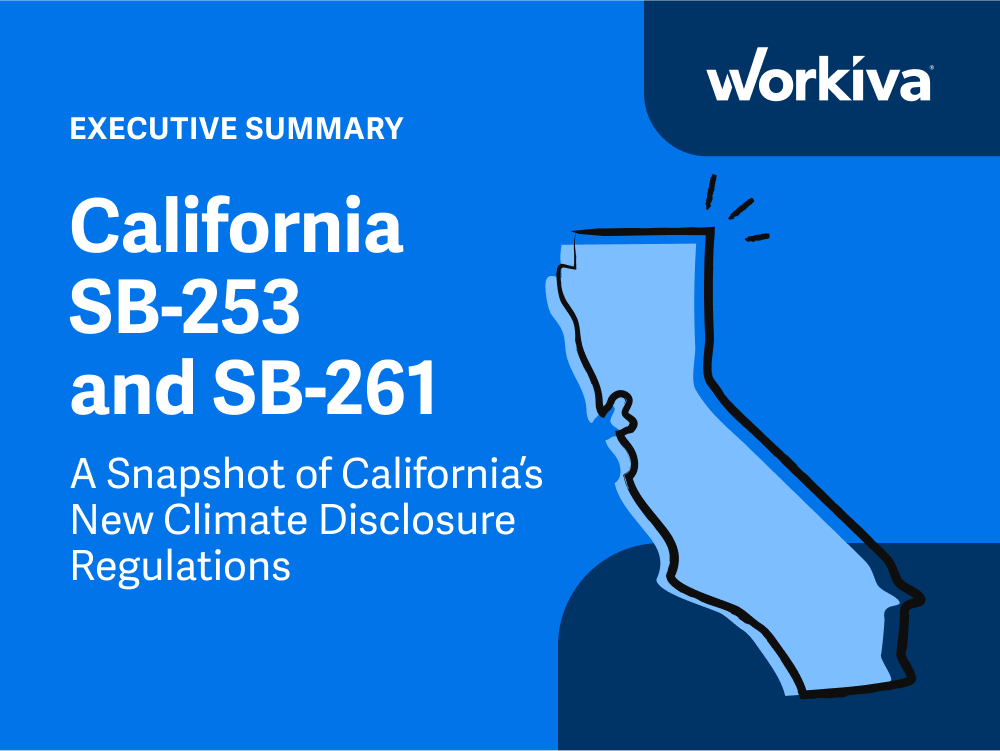Executive Summary: California Climate Laws
- Large corporations operating in California will be required to disclose their carbon footprints and climate-related financial risks starting in 2026.
- The new regulations aim to increase transparency and accountability in corporate environmental practices.
- Workiva has released an executive summary detailing the key details of California's climate disclosure regulations.
- The summary includes information on who will be impacted, the timeline for assurance required, and steps organizations can take to prepare.
- The new regulations may impose additional compliance costs on large corporations.
- Corporations that fail to comply with the disclosure requirements may face reputational damage and potential legal consequences.
Insights
Analyzing...
NORTHAMPTON, MA / ACCESSWIRE / October 17, 2023 / Workiva / On October 7th, California Governor Gavin Newsom signed SB-253 and SB-261, two bills that would require large corporations operating in the state to disclose their carbon footprints and climate-related financial risks starting in 2026.

A new executive summary from Workiva summarizes key details in California's climate disclosure regulations, including:
- Who's impacted and what's in scope for GHG emissions
- A timeline for assurance required by SB-253
- How climate-related financial risks are defined by SB-261
- Five steps organizations can take now to prepare
View additional multimedia and more ESG storytelling from Workiva on 3blmedia.com.
Contact Info:
Spokesperson: Workiva
Website: https://www.3blmedia.com/profiles/workiva
Email: info@3blmedia.com
SOURCE: Workiva
View source version on accesswire.com:
https://www.accesswire.com/793689/executive-summary-california-climate-laws







